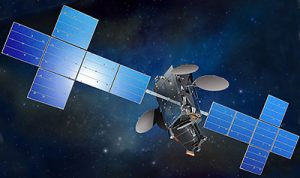 AsiaSat 9 is set for launch on September 29 by an ILS Proton Breeze M rocket from the Baikonur Cosmodrome, Kazakhstan.
AsiaSat 9 is set for launch on September 29 by an ILS Proton Breeze M rocket from the Baikonur Cosmodrome, Kazakhstan.
This next generation satellite, based on the SSL 1300 platform, is designed to replace AsiaSat 4 and to provide multiple C, Ku and Ka-Band payloads for direct-to-home (DTH) television broadcast, video distribution, VSAT broadband networks and mobility services at 122 degrees East longitude.
With features such as Asia’s highest powered 110 watts C-band TWTA, special filter design, star tracker and hall effect thrusters, AsiaSat 9 is able to deliver enhanced performance, higher efficiency and operational stability. AsiaSat 9 will also offer brand new coverage for high growth markets in Asia, including the world’s first dedicated Ku-band Myanmar beam, high-power Ku-band beams for Indonesia and Mongolia, in addition to two enhanced Ku-band beams serving Australasia and East Asia, and a wide C-band footprint that offers significantly improved power over Asia, Australasia and the Pacific region.
The mission is performed by the Proton Breeze M rocket from launch pad 39 at the Baikonur Cosmodrome in Kazakhstan.
The first three stages of the Proton will use a standard ascent profile to place the orbital unit (Breeze M upper stage and the AsiaSat 9 satellite) into a sub-orbital trajectory. From this point in the mission, the Breeze M will perform planned mission maneuvers to advance the orbital unit first to a nearly circular parking orbit, then to an intermediate orbit, followed by a transfer orbit, and finally to a geosynchronous transfer orbit. Separation of the AsiaSat 9 satellite is scheduled to occur approximately 9 hours, 13 minutes after lift-off.














Add Comment